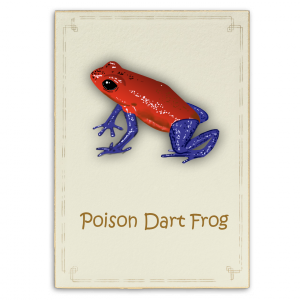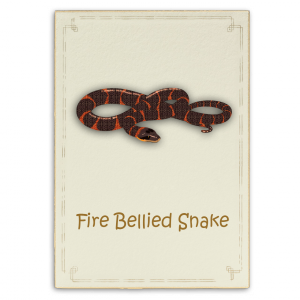Newsletter #9: March 20th
Overview:
We started off this week with a playtest at Mountainview Elementary School, and compiled some of the initial findings into our halves presentation. We then had our halves presentation which went fairly well. We ended this week in spending time organizing ourselves for the deadlines to come and breaking down the work that needs to be done to complete the product we defined. Over the weekend (Saturday) before the week started we had a phone call with Kenneth Kaemmerer, who agreed to be our content advisor.
The playtest build can be downloaded at:
https://drive.google.com/open?id=0B0gyQphBXokCZUZkZkdJU2ItQVU&authuser=0
Our halves presentation can be viewed again at:
http://stream.etc.cmu.edu/projects/2015-semester-1/halves/day2/
starting at around the 58th minute mark.
The presentation deck can be downloaded at:
https://drive.google.com/open?id=0B9d4fhBdxrHtRV82ZFVFemIwSzg&authuser=0
Document describing our overall game flow which we believe we did not fully address during our halves presentation:
https://drive.google.com/open?id=0B61FeDSwwr4uU253LW5nWTM1TXc&authuser=0
Tasks Completed:
- Integrated build & Playtest 1
- Halves presentation
- Dominant species card game implementable design spec and playable prototype
- Defining all necessary tasks to complete the design of our end product
- Laying the foundation for integrating UI
- Laying the foundation and playing the paper prototype of the dominant species card game
- Art for the dominant species card game
- Improved Workflows
Playtest and Findings:
This Monday (March 16th) the team visited Mountainview Elementary School. We were able to get playtest data from 69 students in total – 30 first graders and 39 second graders. We were also able to talk with the teachers and ask them how we could make the game more useful to them.
Our initial takeaways from the playtest are:
from Students:
- What did they learn?
- Learned about food chains and mutualism
- What were the trouble areas?
- Dominant strategies revealed
- What can we add to improve the current state?
- Instructions and tutorials needed
from Teachers:
- How will this be used in class?
- Stage for Discussion
- What can we do to make this more useful in the classroom?
- Documentation on what is being taught in each game
We are still compiling comprehensive notes on what we learnt from the playtest and hope to use this to inform ourselves of what to change/improve by the next playtest deadline March 28th.
Halves:
Following the playtest the team began working on polishing and practising for our halves presentation. For this presentation we prepared a slide deck which we then presented to our faculty. While we still have not received our official feedback yet. We did feel some parts needed improvement and also realized that we needed to work on improving some of our workflows.
Production:
As mentioned above we understood that in order to complete this project we needed to improve some areas of our workflow and ensure that all of us were on the same page with regards to what the games were how the game flowed and what our end goal of the game was.
The biggest question that we started to define (which we had been slightly shifting off to the side, in lieu of gameplay and features) was:
At the end of the experience, having playing our game, what exactly is it that we want the children to take away.
This question also needed to be answered from the perspective of each mini-game. As we continue to ponder over the answer to this question over the weekend, we also wanted to define what was the most important thing to each of us that we wanted to communicate via the games. We want to have a proper answer to this question by next week which will give us a renewed focus on the core mechanic/Vision/Objective of our end product.
Design:
The Design team began breaking down the remaining work into actionable tasks and definable pieces.
The design team has set for themselves the end of the 11th week as their deadline for finishing the entire design of the remainder of the experience.
We have also began testing the paper prototype of the dominant species card game that teaches about the food pyramid. We have been playing this and with the knowledge gained from how the system of this game works our programmers will start the development of the dominant species mini-game.
Art:
The artists have began working on communicating with the programmers with regards to integrating the UI so that it can be playtested along with the games. As it currently stands while the UI has been designed with continuous input from the designers with regards to game flow, we still need to implement it. This week we began laying out the foundation for the implementation of the UI.
Our artists have also started making the dominant species card game. They have also been giving their inputs into how to make the world more connected to the theme of the rainforest and how to make the games give the players a feeling of actually being in the rainforest, as a disconnect was felt between the maps which depicted the rainforest and the actual playable games.
The design team has also been working with our artists to define the complete set of wildlife that will be found in game. We have stated 20 wildlife as our initial target and will see if we can push for more if the time is available. The artists have also started working on other backgrounds and local maps and will be refining our current art to make them more lush and vivid.
Programmers
The programming team has used their time this week laying the foundation to implement the features of the dominant species card game and integrate the UI into our current build.
They have also polished some of the bugs in our build and have been working with both design and art in order to find ways to enhance the experience of some of the re-skinnable games such as the photo-taking game.
Moving Forward:
Next week the team will be
- Implementing and integrating the dominant species card game.
- Implementing the initial UI designs.
- Defining the 20 exotic wildlife that we want to showcase
- Define what we want the kids to take away from our end product
- Start the work on the other three local maps
- Redesign the pins to be more specific
Important Dates and Deadlines:
March 28th Saturday: ETC Playtest Day

